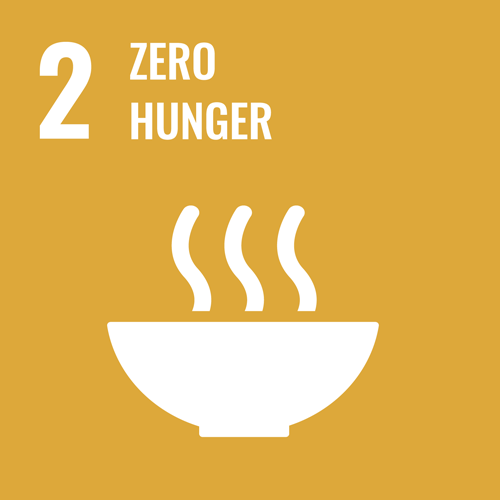For decades, the number of hungry people was declining. This isn’t true anymore.
The COVID-19 pandemic is having an unprecedented impact on food systems. But even before COVID-19 began to affect food systems and agricultural livelihoods, 135 million people were already facing acute food insecurity.
The World Food Programme’s 2020 Global Report on Food Crises describes the scale of acute hunger in the world. It provides an analysis of the drivers that are contributing to food crises across the globe, and examines how the COVID-19 pandemic might contribute to their perpetuation or deterioration.
RELATED: On Earth day a call to action to use tech to monitor COVID-19s impact on food security
Experts came together in a webinar “Breakthrough” session of the annual AI for Good Global Summit to discuss food insecurity and possible solutions. Moderated by Caroline Kolta, Senior Associate of XPrize, the panel explored how AI and innovative technology can help shape the food landscape of tomorrow. Here’s what they had to say.
Systemic change – a window of opportunity
Lorin Fries, Founder and Lead Partner, FutureTable, highlighted some of the actors hardest hit by COVID-19 and suggested ways that the food crisis might bring not only change, but a window of opportunity.
Those from import-dependent nations and regions, explained Fries, would be some of the hardest hit – for example, Africa and small-island developing states. Africa is already set to import 110 billion USD of food by 2025. “This will interact with a reverse shift in globalization to more decentralized food systems,” said Fries.
A case study on a decentralized food system in Mozambique was published by the United Nations Food and Agriculture Organization. It shows what might be required for the successful implementation of decentralized food systems. Information and communication technologies (ICTs) would be part of that.
Fries points out that while we are recognizing the essential role of farm, factory and food workers, at the same time we are realizing that any human interaction with the food value chain, at least in the context of a virus, presents some risk. “So you see a lot of activity in the investment space for instance around robotics and automation,” said Fries, also indicating that “the question of the future of work for workers in this turbo-charged digital age is an open one.”
Entrepreneurs and small and medium-size enterprises (SMEs) are experiencing high impact from the current food crisis. SMEs in Africa, are considered to be the backbone of the economy, providing food services to their communities. “How we can support the SMEs is then an imperative question at this moment,” said Fries.
Innovative solutions
AI is already helping in agriculture; for example, picking vegetables, controlling pest infestations, soil and crop health monitoring and predictive analysis.
Bernard Kowatsch, Head of Innovation Accelerator, United Nations World Food Programme (WFP), the world’s leading agency fighting hunger, outlined some of WFP’s innovative solutions to food insecurity.
Within days of the pandemic being declared, HungerMap LIVE was tracking coronavirus outbreaks in most low- and lower-middle income countries. WFP’s Hunger Monitoring unit is now collecting, analysing and visualizing real-time data to scale up remote food security monitoring to 40 countries. The map enables a quicker response to emergencies. “You can be faster in getting the right food at the right time. And that can have a huge impact”, says Kowatsch.
By making it easy to analyse connected data streams, WFP is helping the humanitarian community make fast, evidence-based decisions.
Another WPF innovation is the PLUS School Menu Optimizer tool. The tool is an online software that, through an advanced mathematical algorithm, calculates the most nutritious and cost- effective school feeding menus to ensure dietary diversity based on local food where possible.
The WFP e-shop Somalia is enabling citizens to shop comfortably from any authorized World Food Programme retailer in the country.
Kowatsch also cited Hello Tractor, a startup which claims to offer technology for smarter, better maintained, and more profitable tractors now powered by artificial intelligence for better and faster decision-making.
Fries sees producing food elsewhere such as indoor farming accelerating forward in future.
“Supply chain logistics and the efficiencies that can be gained through digitization and some of the AI apps will be absolutely key,” says Fries. Improving traceability in food value chains is one key requirement.
E-commerce is already shaping how people buy food, from Alibaba and Amazon down to marketplaces, but Fries is convinced that there is a set of innovative market spaces such as Nigeria, that are doing a better job of linking supply and demand, and balancing demand and supply.
An app in Nigeria is helping to reduce waste in the food system (see video).
From ‘linear’ to ‘circular’ food system
Merijn Dols, Global Director of Open Innovation and Circular Economy of Food, Danone anticipates some opportunity during this food crisis, to re-design and innovate.
“This unprecedented shock to the system is making the downsides of our linear food system that we have created very visible, and even undeniable, said Dols. “And this might be the start of an acceleration in the system shift.”
Dols explained that our current linear food system is built on a view of the world of a giant machine driving growth, where one of the key levers for this growth, and the driver of the system, is efficiency.
Hence, Dols strongly advocates for a circular food system – one that has positive economic and social impact by design. A system which, he explains, aims at dynamic balance rather than infinite growth. “A system that is not driven by efficiency, but it is driven by effectiveness. Which is about doing the right thing,” says Dols.
According to Dols, building a circular system of food would need AI. With highly local farming, for example, farmers will need data that is relevant to their crops, and to identify the crops that work best in a specific environment. AI can be harnessed for connecting producers and consumers.
“I see AI helping producers and consumers connect real-time.” says Dols, adding that “real-time access to holistic, understandable data will help everyone.”
“AI can have a positive impact on a different, regenerative future,” enthuses Dols.
AI in developing countries – benefiting those who need it most
What does food investment in AI in developing countries look like?
Bernard Kowatsch is of the opinion that venture capital money is generally underrepresented in food compared to other sectors. Even there, he says a lot of the investment goes to food delivery apps, while there is potential for much to be done in developing countries.
“This is where particularly local talent could be supportive – in some of the hot spots in Africa and the Middle East, and some other areas, across Asia and Latin America,” said Kowatsch. “There is talent, and interesting startups, and definitely drive.” “Those start-ups have better knowledge of the local innovation ecosystem,” he says.
Referring to the AI hotspots – Silicon Valley, some parts of Europe, China and other places with lots of AI researchers – Kowatsch questioned how that technology can be provided and made more accessible to other parts of the world. Could companies provide pro bono resources, or focus on building up local innovation hubs in Africa? “Some of the tech companies are doing that.” he says.
Kowatsch suggested that there is a need to inspire people – serial entrepreneurs who can actually create a business that has a positive impact on the planet – in ending hunger.
“This is a huge opportunity… You can create a startup and create jobs for yourself and others and still have a positive impact.”
“We need to broadcast this more and be open to it,” said Kowatsch.
The costs of AI
For Lorin Fries, collaboration is critical. “There is a world of opportunity at the intersection of technology like AI and issues like hunger or social impact more broadly,” she says, adding that “we need a multi-stakeholder approach. Business to come alongside governments – alongside civil society – alongside a range of players involved.”
She warned against the costs of using AI, such as for example, the potential perpetuation of bias, and the need for clear re-designing.
“How do we actually put ethics and equity at the centre of our AI systems — including and especially as applied to our food systems?” asked Fries.
She also cautioned how “data is the new gold, and much of it is owned, and will be owned by large players – big businesses.”
She encouraged reflection on how the data will be accessed by the people who use it; the farmers, for example, and consumers.
“We need more open source systems, more protections, more savvy citizens and more tech knowledgeable consumers,” said Fries. “It is complicated, and collaboration is very difficult. Actors speak different languages – and have different cultures.”
The panel agreed, nevertheless, that having people at the centre, to help transform AI for social good will be key in helping to fight hunger and food insecurity, and reshaping the food systems of tomorrow.
___________________________________________________
This year’s AI for Good Global Summit is being held online throughout the year. Don’t miss the next webinar on 15 May.
















